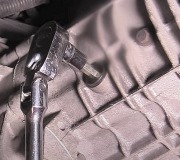I have been experiencing a few problems after 6+ years of nothing. The problems began with a "clicking" noise coming from the engine. I took it to a mechanic in Brooklyn NY and they told me that it maybe from the air-compressor not clicking on/over and/or the fan hitting something.
The bottom line is that after replacing the battery (which had nothing to do with the noise) and changing the oil and transmission fluid the clicking sound has vanished.
However, we I turn on the A/C there is NO cold air. I think it needs freon but not sure.
If it is freon, can I go to a PepBoys and buy it? I saw someone who wrote this:
"The easiest way to recharge your air conditioner is to go to auto-zone, or like store and purchase one of the small recharge canisters they sell. It is an aerosol size can, (slightly larger though) and has a rubber tube extension. It looks a lot like a fix-a-flat can. This simply hooks into the vehicle and through pressure it transfers freon into the AC unit. This is the best way because if you buy a whole tank of freon it will most likely be a waste of money and a hazard to your storage environment. Also, in some cases you need requirements before you purchase large quantities of freon."
I am pretty sure (90%) there is NO leak as I have never seen anything dripping from under the car. However I am not a mechanic.
Thoughts?
I really don't want to get ripped off taking it somewhere for them to do something I could do myself.
Thank you!
Monday, April 5th, 2010 AT 4:39 PM




